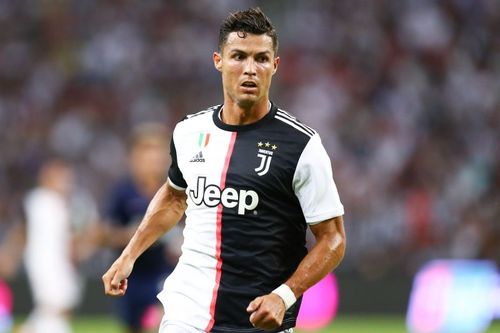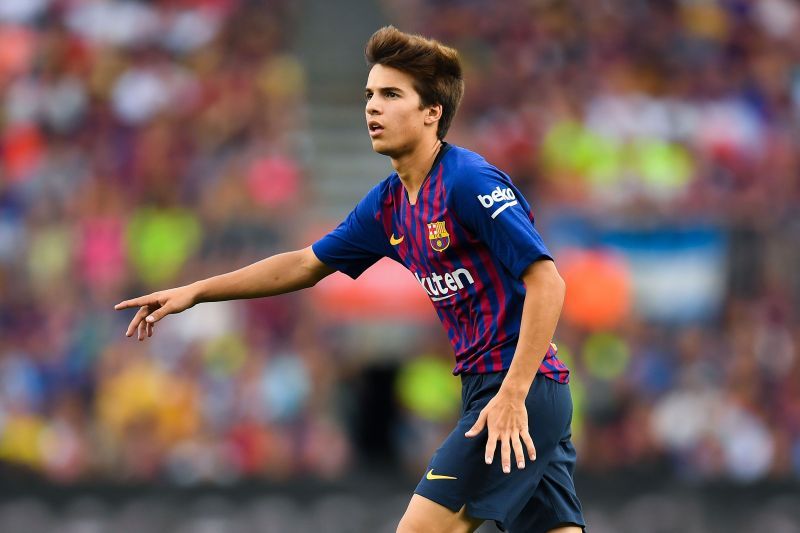
The future of football: Why player positions may not matter anymore

Throughout the history of football, the sport has always had great players in every generation. From the days of Italy’s Giuseppe Meazza, to the Soviet Union’s Lev Yashin, from Brazil’s Pele to Argentina’s Diego Maradona, football players have appeared in every shape, size and greatness.
However, what has remained constant is that all these legendary football players, or others, have had specific positions in which they excelled. For instance, Garrincha played on the right wing, dribbling and destabilising the defensive shape of his opponents. Hugo Lloris has played as a goalkeeper throughout his impressive career and the brilliant Xavi Hernandez showcased his skills from midfield.
All football players today have a specific position they play in. They are usually deployed in their preferred positions to maximise their efficacy and productivity. However, there are multiple subdivisions within a specific position in the football field.
In the forward position, you have centre-forward, second striker, right-winger and left-winger. Similarly, the midfield is also divided into central midfield, defensive midfield, right-midfield, left-midfield, attacking midfield, left central midfield and right central midfield.
But most football players have shown that they can adapt and play in positions all across the pitch. In fact, it is important today for players to be open to change and adaptability.
The perils of being a versatile player

Although there are benefits to being a versatile player, it also comes with some risks. Some players have suffered because of their versatility. Their flexibility to adapt to various positions meant that they could never fully develop their game in any one part of the pitch.
In this regard, Real Madrid’s Guti Hernandez comes to mind. Throughout his career, the Spanish midfielder had to accommodate his role and playing style because Los Blancos brought in a bevvy of marquee midfielders like Zinedine Zidane, Claude Makelele and Kaka.
Let us also take the example of Paul Pogba. It is not yet known which is the Frenchman’s most favourable position in the pitch. Put him in a defensive midfield position, and it feels as if his best attributes are under-utilised.
Use him as a box-to-box player, you get the sense that he could be better deployed as a holding midfielder dictating play with his wide array of passes. Deploy him as a central midfielder, and you get the feeling that a player like him, with his physical presence, should be moving around more often on the pitch.
Being a versatile player can often mean stunted growth in an ‘assigned’ position.
Versatile players are a blessing for any team

Being a versatile player may not always be a good proposition for the positional stability of a footballer, but it is almost always a blessing for the club he plays for.
Pep Guardiola converted Fabian Delph, a midfielder, into a makeshift left-back. He now also plays as a left-back for Everton at times. Guardiola also put a defensive midfielder Javier Mascherano to central defence, transforming the Argentine player from a midfielder to a defender. In fact, there are many such instances of footballers asked to change positions for the benefit of their teams.
Antonio Valencia, who played as an attacking winger at Wigan Athletic, became a right-back for Manchester United. Ashley Young likewise, a left-wing forward for Aston Villa, turned into a left-back for the Old Trafford club.
Young became so adept at his newly acquired role that Inter Milan went for the Englishman’s services to bolster their defence. All these examples go on to prove that a footballer’s dedicated position is a myth; a player is capable of playing in any position if he is willing to change his game and let his skills be honed.
We have also seen goalkeepers doing the unthinkable in recent years. In the 2018 World Cup group stage match against South Korea, Manuel Neuer, a goalkeeper, turned himself into an extra midfielder to push for a German goal.
Marc Andre Ter Stegen has consistently turned himself into a makeshift centre-back to provide a passing option to his colleagues in defence. This is especially seen when Barcelona press high up the pitch, therefore also pushing up their defensive line.
If their teammates’ reports are to be believed, both Neuer and Ter Stegen are excellent outfield players as well. This becomes evident when we see their terrific first touch, ball control and ball distribution.

Why then are footballers still assigned specific positions on the pitch?
Firstly, footballers are assigned specific positions on the pitch for their growth and development. Football is, first and foremost, a team sport and eleven players have to be accommodated in the team to play a game of football.
Therefore, each player has to make certain positional sacrifices in order to be included in the collective. This is why footballers in the youth level often change their positions during the course of their careers.
Carles Puyol began his career as a goalkeeper, then switched to become a striker, until finally becoming a legendary central defender. Neymar was an attacking midfielder but today he can also play as a second striker or a left winger.
There are countless such examples where footballers changed their positions radically, and also players being equally adept in multiple positions on the pitch.
Barcelona’s Sergi Roberto has become so used to playing as a right-back that during the match against Atletico Madrid, he looked out of place in midfield. In fact, ironically enough, despite being in Barcelona’s plans since 2011, it is only after changing himself to a right-back that the now 27-year-old has been able to play consistently for the Catalan giants.
This again goes on to show that being a versatile footballer eventually benefits the player in the long run, even if he may have to sacrifice playing in his ‘preferred’ position.
The all-rounder and the future footballer

In the game of cricket, there is the concept of an all-round player - a versatile athlete who is an equally efficient batsman, bowler and fielder.
To include Rahul Dravid in the 2003 World Cup squad, India captain Sourav Ganguly turned the Bangalore batsman into a wicket-keeper. Therefore, instead of being registered just as a batsman in the team, which India had in plenty, Dravid added value to the team by becoming a wicket-keeper, a must-have position in every cricket team.
It also added to Dravid’s repertoire of skills. In fact, after the introduction of T20 cricket, all-rounders are the most sought-after players in a team. The all-rounder is a more useful and dynamic player because he adds to a cricket team's depth.
Similarly, footballers’ worth is also measured by their adaptability to multiple positions on the pitch. Such players earn significantly higher wages than their less versatile counterparts.
If we look at the history of all great football players, we will soon observe that they adapted their games during various points in their careers. Lionel Messi, who began as a right-winger, has played as a centre-forward, false nine, attacking midfielder and second striker.
Cristiano Ronaldo transformed himself from a swashbuckling left-winger to a goal poacher, a fox in the box. Wayne Rooney changed from a striker to an attacking midfielder during the time when David Moyes was in charge of Manchester United.

Therefore, a footballer’s ‘assigned’ or ‘registered’ position does not matter anymore. In truth, it has never mattered.
A football player's value to a team is measured by his contribution to that team. A player who plays in his assigned position but cannot contribute much to the team's cause can at times prosper when he is deployed in another position. Such a player who is able to adapt his game to play in a different role is a precious asset to have.
There will come a time in the future when footballers will cease to have a default on-field position. Rinus Michels had developed the concept of Total Football where the players in the Dutch team of the 1970s would seamlessly fit into various positions.
Today, we often see footballers deputising for their injured or suspended colleagues in a game or two. The central midfielder Yaya Toure played as a makeshift centre-back in the 2009 Champions League final. He also helped keep a clean sheet that night as Barcelona ran out 2-0 winners.
As the twenty-first century moves on to its third decade, the game of football must brace itself for more revolutionary changes. A time will come when every player will be able to play in every position on the football pitch.